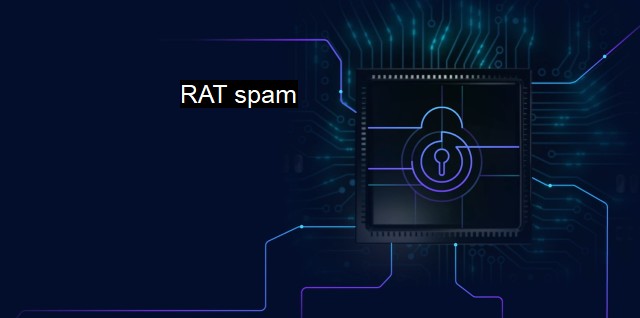What is RAT spam?
Understanding RAT Spam: The Threat of Remote Access Trojan Attacks Against Individuals and Organizations
"RAT spam" is a term that pertains to a malicious form of cybersecurity breach known as Remote Access Trojan. Predominantly leveraged by cybercriminals, RAT spam is often used to gain complete control over the user systems surreptitiously. It is a malicious, threatening code that manipulates and takes advantage of the user's computer without their knowledge, converting the system into a tool for illegal activities.In this context, the term spam is used to denote a large-scale outreach targeting numerous users simultaneously. The term is synonymous with bulk or excessive, referencing the modus operandi of such cyber attacks – mass distribution. When combined, RAT spam represents the wide-scale and indiscriminate distribution of Remote Access Trojans via digital interfaces, software, and applications.
RATs are much more potent than traditional forms of malware due to the high level control they offer the attacker once installed on a victim's device. They are capable of transmitting personal data, modifying system settings, monitoring user activity, uploading and downloading files, and even recording keystrokes. Hence, an attacked target can be anything—an insecure network, an unscanned email attachment, or a downloaded program from an untrustworthy website.
RAT spam distribution occurs through numerous vectors, the most common being spam emails. Cybercriminals take advantage of unsuspecting users by embedding the malware invisibly in seemingly harmless email attachments or links, creating a mechanism for the RAT to be installed on the user's computer once the file or link is opened.
Another method is known as 'Drive-by downloads,' where contaminated websites or pop-up ads automatically download the malware to a user's computer without their knowledge. Cybercriminals also use social engineering to trick users into downloading malware, posing as a legitimate entity giving away free software downloads in software bundling or updating system or program on the device.
Unfortunately, the prevalence of this malware is growing. Improvements in cybercriminal tactics and the popularity of inexpensive, ready-made Trojans on the dark web are contributing factors to this trend.
To defend against a RAT spam attack, cybersecurity measures should include installing and regularly updating a robust antivirus program. Such protective software continuously monitors system activities and recognizes behavioral patterns while being capable of blocking or deleting RATs before they're installed. investing in a reliable firewall offers an extra layer of protection by blocking unauthorized access to a private network.
In addition to deploying technological defenses, it's critical to inform and educate on the human aspect of cybersecurity. Users should follow best practices, like avoiding unsolicited attachments, only downloading from trusted sources, and regularly backing up valuable data.
Having a security-minded culture at corporations, with training programs on phishing prevention and password security can significantly reduce the chances of a RAT spam attack. Vulnerability management should also exist in corporate structures, employing regular system patch updates, continuous monitoring of system activities, and ensuring AI defenses align with the evolving threat landscape.
The growing digital environment opens it up to numerous cyber threats; RAT spam is just one form among many. Comprehending what it is, how it operates, and utilizing antivirus, firewall, and necessary precautionary measures can help in thwarting off these cyber attacks effectively.

RAT spam FAQs
What is rat spam in cybersecurity?
Rat spam is a cyberattack technique that involves sending a large number of remote access trojans (RATs) to a target system or network with the intent of gaining unauthorized access and control.How can rat spam affect my computer or network?
Rat spam can lead to compromised security, stolen data, and other malicious activities. Once a RAT gains access to a system, it can provide the attacker with complete control over the system, including the ability to steal sensitive information, install additional malware, and even launch attacks on other systems.How can I protect my computer or network from rat spam attacks?
To protect your computer or network against rat spam attacks, it is important to use good cybersecurity practices, such as keeping your antivirus software up to date, avoiding suspicious emails and attachments, and using strong passwords. Additionally, you can use network segmentation and access controls to limit the damage that a RAT can cause if it does gain access to your system.What should I do if my computer or network has been targeted by rat spam?
If you suspect that your computer or network has been targeted by rat spam, you should immediately disconnect from the internet and contact a cybersecurity professional. It is important to isolate the affected system to prevent the spread of the RAT and malware to other parts of the network. The cybersecurity professional can help you identify and remove the RAT and any other malware that may have been installed, and can also help you secure your system to prevent future attacks.| | A | | | B | | | C | | | D | | | E | | | F | | | G | | | H | | | I | | | J | | | K | | | L | | | M | |
| | N | | | O | | | P | | | Q | | | R | | | S | | | T | | | U | | | V | | | W | | | X | | | Y | | | Z | |
| | 1 | | | 2 | | | 3 | | | 4 | | | 7 | | | 8 | | |||||||